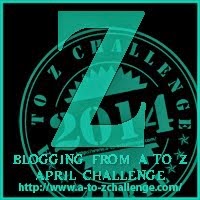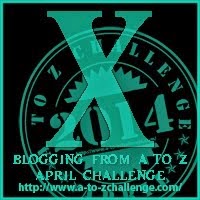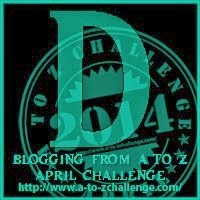April is upon us again, and for me that means the excitement of the A-Z Challenge. Created by Arlee Bird of the
Tossing It Out blog, it involves taking one letter of the alphabet each day (with Sundays off).
Since this is a genealogy blog, although I will still be taking one-letter-a-day, my posts will have a genealogical flavour to them. Last year (2013) I noticed many posts had mediaeval tones to them, although the favourites were more eclectic: 'F is for Farthing' was way out front, with twice as many views as 'W is for Wessex and Wyverns'. This was closely followed by 'S is for Secretary Hand' and 'Z is for Zachariah Hellier'; the rest were only slightly behind.
This year, I will be following a theme of 'Back to Genealogy Basics'. Even if you have been researching your tree for over 30 years, it is still good to remind yourself of the basics you started out with. And there are some I wished someone had told me earlier, so that I didn't fall down and have to get up again quite so often!
The timetable is as follows:
Week One:
April 01, Monday - Letter "A"
April 02, Tuesday - Letter "B"
April 03, Wednesday - Letter "C"
April 04, Thursday - Letter "D"
April 05, Friday - Letter "E"
April 06, Saturday - Letter "F"
Week Two:
April 07, Sunday - BREAK
April 08, Monday - Letter "G"
April 09, Tuesday - Letter "H"
April 10, Wednesday - Letter "I"
April 11, Thursday - Letter "J"
April 12, Friday - Letter "K"
April 13, Saturday - Letter "L"
Week Three:
April 14, Sunday - BREAK
April 15, Monday - Letter "M"
April 16, Tuesday - Letter "N"
April 17, Wednesday - Letter "O"
April 18, Thursday - Letter "P"
April 19, Friday - Letter "Q"
April 20, Saturday - Letter "R"
Week Four:
April 21, Sunday - BREAK
April 22, Monday - Letter "S"
April 23, Tuesday - Letter "T"
April 24, Wednesday - Letter "U"
April 25, Thursday - Letter "V"
April 26, Friday - Letter "W"
April 27, Saturday - Letter "X"
Week Five:
April 28, Sunday - BREAK
April 29, Monday - Letter "Y"
April 30, Tuesday - Letter "Z"





























